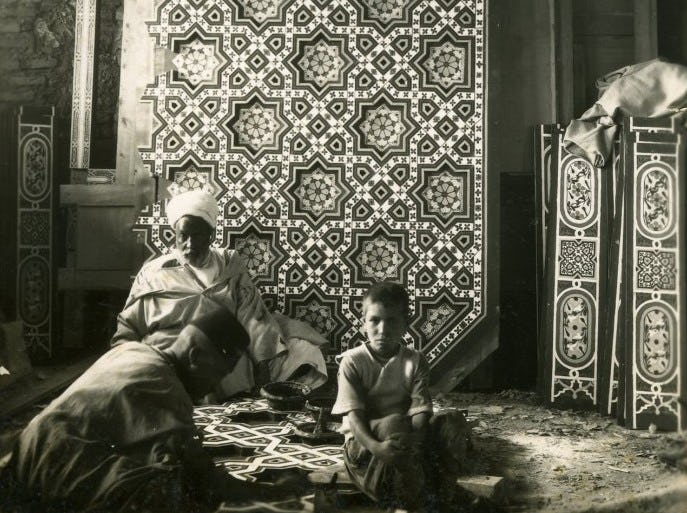My People
ArtistMade by
Bahia Shehab
Date2018
MediumAcrylic and Latex on Wood
DimensionsOverall (Left): 23 × 7 (701.2 × 213.4cm)
Overall (Right): 25 × 7 (762.2 × 213.4cm)
ClassificationsPaintings
Credit LineDoris Duke Foundation for Islamic Art (Programmatic Acquisition)
Object number37.12.1-2
DescriptionThis two-part mural represents a verse from a work by Palestinian poet, Mahmoud Darwish (1941-2008). A poem originally written in Arabic, Shehab has interpreted the title and content of the text as a challenge to power—The Penultimate Address of the “Red Indian" in Front of the White Man (1992)—and selected this evocative phrase for her piece: “My people will return as air and light and water.” The mural uses an artist-created script that has both pixelated and added figurative roots to 10th-century floriated Kufic calligraphy to make a site-specific commentary about colonization, displacement, and loss – of land, people, and identity. My People speaks to how Shangri La is the intersection of cultural aesthetics and a place to explore political concerns across indigenous contexts. Shehab’s inventive and energetic interpretation of Arabic epigraphy richly illustrates the ways that art can be a space for marginalized voices.
A graphic designer as well as an Islamic art historian, Shehab’s study of the development of Arabic scripts has deeply informed the creation of the lettering for this mural. Most commonly, floriated Kufic has leaf-life vegetation erupting from the “stems” of the letters. Here, Shehab has chosen to invert this tradition and create roots for the letters in lieu of leaves or flowers, quite literally embedding the letters - and their associated meanings - into the “soil” of Honolulu. Her pixellation of the letters has a lightening effect on the somber and moving message, respectfully but playfully encouraging the viewer to dwell longer on the artwork and to “assemble” the image visually - she invites us to look, and to keep looking.
This bold artwork is site-specific not only for Honolulu, but also for Shangri La: it is a conscious welcome to our visitors, as well as a visual statement of the unique conflation of lands and identities represented within our museum and our landscapes.
On View
On viewCollections
Dated AH 1270 (1853-1854 CE)
18th - 19th century
12th - 13th century
12th - 13th century
19th century
19th century

















